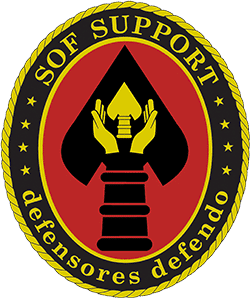Presently, United States Army Special Operations Command (USASOC) claims that Special Forces conducts Unconventional Warfare, Foreign Internal Defense, Direct Action, Special Reconnaissance, Counter-Insurgency, Counterterrorism, Information Operations, Counter-Proliferation of Weapons of Mass Destruction, and Security Force Assistance.
The OSS was formed with a dual purpose mandate: to collection Secret Intelligence abroad and to conduct Unconventional Warfare. In support of Unconventional Warfare, the OSS created the Special Operations branch to organize, train, and employ indigenous guerillas against the Axis Powers, and the Operational Group Command branch to conduct deep strikes and long-range reconnaissance, often with indigenous partners, against the Axis Powers. In 1952, the Special Forces Regiment inherited both of these functions. Since 1952, it has been exceedingly rare for Commanders to authorize SFOD-As to conduct UW, and it’s clear that SFOD-As do not overthrow hostile authoritarian governments frequently. The UW mission dates back to the famed OSS Special Operations branch and Operational Group Command branch, and UW remains a validated requirement of the U.S. Army and USSOCOM today.
The Green Berets and their historical predecessors delivered unique value by conducting kinetic operations in hostile or denied environments—usually in the enemy’s rear. Green Berets train to conduct full-spectrum special operations without persistent resupply or connection to higher command and control. Close relations with indigenous partners facilitate the Special Forces mission, utilizing local proxies not only as force-multipliers but as a means of shelter and supply.
Special Forces utilizes indigenous personnel as force multipliers to achieve campaign-level effects, conducting Direct Action and Counterterrorism actions in support of the UW mission. The Special Reconnaissance mission is meant to facilitate the introduction of U.S. forces into theater and enable the UW operations cycle. The Green Beret instructor role is an implied task within the Unconventional Warfare (UW) and Foreign Internal Defense (FID) missions, but training rendered to indigenous forces is meant to facilitate offensive action. USASOC must stop expanding the Special Forces mission portfolio. It also needs to be understood that the Special Forces Regiment is not the only military institution that works by-with-and-through indigenous partner forces. The Navy SEALs were stood up out of the old Underwater Demolition Teams in 1962. They almost immediately found themselves training ARVN and commandos in Vietnam. SEALs were also frequently tasked to the Phoenix Program, just like their Special Forces brothers, to lead PRUs in raids. More recently, the SEALs were tasked with FID missions in Afghanistan.
The Raiders of the Marine Forces Special Operations Command (MARSOC) are also tasked similar FID and SFA missions. MARSOC was created on the orders of Secretary of Defense Donald Rumsfeld specifically to alleviate some of the mission load on the other USSOCOM components. Marine Special Operations Teams (MSOTs) were designed as an incremental update to the Army’s traditional SFOD-A, and on paper they have nearly identical mission capabilities.
The U.S. Army has also created six Security Force Assistance Brigade (SFABs). Rather than hollow-out a Brigade Combat Team (BCT) of its field grade officers and senior NCOs in order to send military advisors to an indigenous combat formation abroad, the Army decided to create SFABs to support military assistance missions. Each SFAB is a 500 soldier formation, commanded by a Colonel, and staffed with 60 cross-functional teams of 6-8 advisors. The SFAB teams are categorized as maneuver, artillery, combat engineers, and logistics advisors.
The Special Forces Regiment does not have the size and personnel to exclusively control the train-advise-assist mission sets (FID, SFA, COIN, etc.) in an active war. The Regiment was not large enough to cover all of these missions in Vietnam; nor in Afghanistan; nor in Iraq. It won’t cover all such missions in the next war.
The creation of MARSOC and the SFABs is not the slow and steady creep of outsiders into the exclusive domain of Army Special Forces. These units were stood up in recognition that there would never be enough Green Berets to go around.
Link to Article: Rethinking the Special Forces Mission
